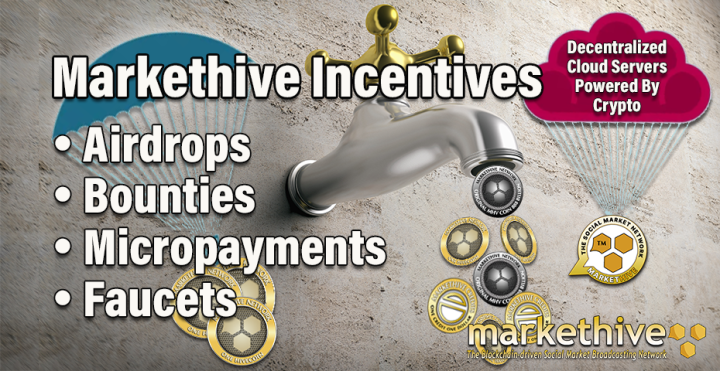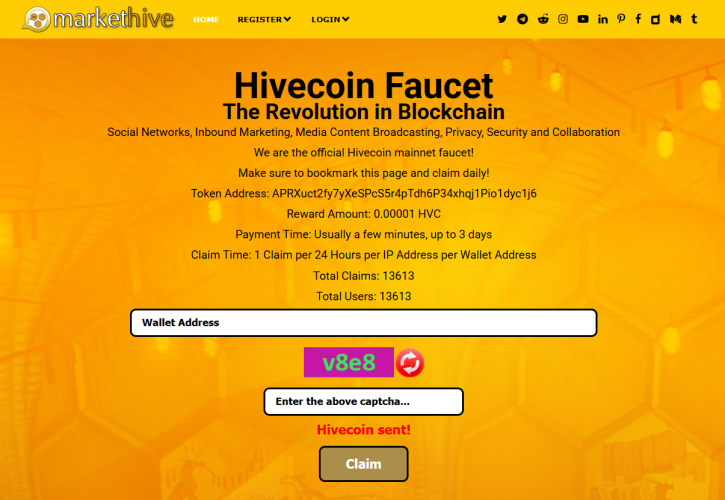


Let's begin with a historical overview of the Bitcoin network to provide some context for those unfamiliar with Bitcoin or cryptocurrency terminology before we explore what constitutes a cryptocurrency or alternative coin (altcoin) faucet. While navigating the world of Bitcoin may be second nature to many, a significant number of people still know very little about it despite having heard of it.
The inception of the world's first fully decentralized digital currency, Bitcoin, took place on January 3, 2009. Its enigmatic creator, Satoshi Nakamoto, whose true identity remains unknown, introduced the Bitcoin network (version 0.1) and mined the inaugural block, known as the "Genesis Block." This pivotal event marked the birth of the first blockchain, a revolutionary distributed ledger technology underpinning Bitcoin and many other altcoins.
The Genesis Block held immense significance, containing the first 50 Bitcoins created. From this initial block, all subsequent Bitcoins would originate through a process called mining. This innovative process involves solving complex mathematical problems to validate transactions and add them to the blockchain. Miners who successfully solve these problems are rewarded with newly minted Bitcoins.
Nakamoto's vision for Bitcoin was to create a decentralized digital currency that operated independently of any government or financial institution. This decentralization was achieved through blockchain technology, enabling a trustless and transparent system for recording and verifying transactions.
Bitcoin's foundational principles of decentralization, security, and scarcity quickly attracted a growing community of supporters and investors. There were estimations that each Bitcoin could be worth as much as $10 million if it became the global reserve currency.
The launch of Bitcoin in 2009 marked a significant milestone in the history of finance and technology. It introduced the world to the concept of cryptocurrency and showcased the potential of blockchain technology to disrupt traditional financial systems. While Bitcoin's future continues to evolve, its impact on the global economy and economic landscape is undeniable.
On May 22, 2010, Laszlo Hanyecz made history using Bitcoin to buy a pizza. He offered 10,000 BTC for two pizzas, and Papa Johns Pizza restaurant accepted the offer. At that time, each Bitcoin was worth approximately $0.0025, making the total value of the transaction around $25. Given today's Bitcoin value, those 10,000 coins would be worth over $833 million, highlighting the dramatic increase in Bitcoin's value over time.
A Bitcoin or cryptocurrency faucet is a website or app that distributes free Bitcoins. These faucets attract users by rewarding them with Satoshis (Sats) for completing simple tasks. A Satoshi, the smallest unit of Bitcoin currency recorded on the blockchain, is one hundred millionth of a single Bitcoin (0.00000001 BTC). The unit was named in honor of Bitcoin's original creator.
Cryptocurrency faucets are a risk-free way for new users to get acquainted with digital currencies like Bitcoin. These platforms require minimal upkeep and provide a "try before you buy" experience, allowing users to earn BTC without financial commitment. By offering this practical introduction, faucets attract and familiarize new users with cryptocurrencies, ultimately promoting their wider adoption.
The first Bitcoin faucet, created by Gavin Andresen in 2010, distributed five Bitcoins per person. While this amount may have seemed negligible at the time, it serves as a powerful reminder of the potential value of early cryptocurrency adoption. Today, those five Bitcoins would be worth a significant sum, highlighting the potential rewards for those who embrace new technologies early.
The cryptocurrency landscape has experienced exponential growth since Bitcoin's inception. The number of alternative coins available has surged remarkably. This proliferation of altcoins has led to a saturated market where many have failed to gain traction and are unlikely to survive or appreciate in value due to a lack of utility or adoption.
However, a few have distinguished themselves amidst this vast sea of altcoins. These altcoins are built on strong technological foundations and have a defined purpose that addresses specific needs or challenges within a particular sector or industry. They have demonstrated potential for long-term viability and value appreciation, offering hope and optimism in the ever-evolving world of cryptocurrencies.
These promising altcoins have implemented a faucet system to encourage adoption and engagement. This system distributes small amounts of the cryptocurrency for free to users, allowing them to experience its functionality and potential benefits without needing an initial investment.

Cryptocurrency faucets help newcomers navigate the world of Bitcoin and other altcoins. These platforms typically provide educational resources and free coins, enabling novice users to learn and experiment without financial risk. By offering a safe and accessible environment, faucets encourage cryptocurrency adoption and attract new users who may feel overwhelmed or confused by the complexities of the crypto space.
Faucets- websites that dispense free cryptocurrency- attract substantial traffic due to their giveaway model, essentially distributing free money. This leads to high page views and daily visits. Additionally, faucets serve as effective promotional tools for other products, services, or content, particularly for engaging new users.
The challenge lies in creating a popular faucet that attracts and retains users and in achieving this in a highly competitive market. Without added value, generating enough revenue to cover the cost of the distributed cryptocurrency is nearly impossible.
The key to profitability with a faucet lies in understanding user needs and online trends. By offering additional value, a faucet platform can differentiate itself and become highly valuable to users, potentially even going viral.
Expanding on Value Proposition and User Engagement:
The "extra value" that a faucet can provide to stand out takes various forms:
Monetization Strategies:
While giving away cryptocurrency may seem counterintuitive to profit, faucet platforms can employ various monetization strategies:
Sustainability and Compliance:
Faucet platforms can ensure long-term sustainability and avoid legal issues by:
By understanding user needs, offering additional value, and implementing effective monetization strategies, faucet websites can thrive in the competitive cryptocurrency space and achieve sustainable profitability.
%20copy.png)
Notably, Markethive’s native cryptocurrency, Hivecoin (HVC), serves a real purpose with its utility in the social marketing and digital broadcasting sectors, integrating the elements mentioned above. Markethive is strategically positioning itself to become a major player in the emerging landscape of next-generation Market Networks.
This innovative concept represents a convergence of various digital platforms, integrating the core functionalities of social networking (similar to Facebook), SaaS tools (akin to GoToMeeting, Zoom, and Aweber), and commerce platforms (comparable to eBay, freelancers, Coinbase, and Alibaba), as well as digital broadcasting and press release sites (like Cointelegraph, AMB Crypto, and PRLog). By combining these diverse elements, Market Networks is poised to revolutionize how users interact, collaborate, and conduct business online.
Markethive's decision to embrace this next-generation model reflects a forward-thinking approach and a deep understanding of the evolving digital landscape. By positioning itself at the forefront of this emerging trend, Markethive is poised to capitalize on the vast opportunities presented by Market Networks and strengthen its role as a leader in the digital marketplace.
Markethive utilizes its cryptocurrency, Hivecoin (HVC), which has a capped supply of 100 million coins. This scarcity model is a strategic choice intended to generate value and stimulate demand for the cryptocurrency. It is meant to be traded on the open cryptocurrency market, allowing users to buy and sell HVC across various exchanges. Trading HVC on the open market further enhances its liquidity and accessibility, making it more appealing to potential investors and users.
Unlike many other cryptocurrencies and platforms that rely heavily on speculative value, Markethive's Hivecoin is designed to generate sustainable economic velocity within its entrepreneurial ecosystem. This key distinction stems from Markethive's unique approach to revenue generation.
While Markethive leverages the advantages of blockchain technology, it also incorporates traditional revenue-generating models. This hybrid approach ensures that the platform's financial stability is not solely dependent on the fluctuating value of its cryptocurrency.
By diversifying its revenue streams, focusing on creating real-world value, and integrating blockchain technology into its core business model, Markethive aims to establish a more stable and resilient economic environment for entrepreneurs and businesses operating on its platform. This fundamental difference in economic philosophy distinguishes Markethive from many other cryptocurrency platforms and positions it as a potential leader in the evolving digital economy.
In addition to HVC, Markethive also utilizes another token within its ecosystem known as the Markethive Token (MHV). With a significantly larger supply of 8.8 billion, MHV can be regarded as a subunit or fraction of Hivecoin, similar to the relationship between Bitcoin and its satoshi. MHV plays a vital role within the Markethive platform, as it is used for airdrops and micropayments.
Through airdrops, users can earn free MHV tokens as rewards for referring new members and participating in various activities within Markethive. Additionally, the micropayment system, also referred to as a faucet, allows members to earn varying amounts of MHV based on their activities and engagement on the platform, which is reflected in their Markethive wallet and converted to HVC at a rate of 0.005.
It’s a comprehensive system designed to encourage active participation and cultivate a sense of community among its users. This is accomplished by offering incentives for various activities, which can be broadly categorized into two main areas:
Additionally, Markethive has established an official Hivecoin mainnet faucet that allows you to grow your HVC portfolio by visiting the Hivecoin Faucet website daily to receive free crypto. Simply paste your Markethive wallet address into the bar, complete the captcha, and claim your reward. You will typically receive 0.00001 HVC within a few minutes, but it may take up to three days. Be sure to bookmark the site and visit it daily to accumulate your HVC. This powerful force multiplier enhances the transactional activity needed to comply with exchange protocols.

Markethive has embraced this reward system and applied it to various aspects of marketing and communications within Markethive. It is a comprehensive reward system designed to stimulate and acknowledge user engagement and contributions across a wide range of marketing and communication activities. This multifaceted system recognizes and rewards users for their active participation in content creation, social media sharing, community engagement, and other promotional endeavors.
Content creation may involve writing blog posts and articles or producing videos. Social media sharing could entail distributing Markethive content on platforms such as Facebook, Twitter, and LinkedIn. Community engagement might include participating in Markethive forums, commenting on blog posts, or responding to queries from other users. Additional promotional efforts include referring new users to Markethive or engaging in Markethive's campaigns.
By providing tangible rewards and recognition for these activities, Markethive encourages users to actively contribute to the growth and success of the platform and the businesses using the Markethive platform. These rewards may include points (Hive Rank), badges, or promo codes. Ultimately, by incentivizing participation and contribution, Markethive fosters a sense of community and shared purpose among its users.
This sense of community motivates users to persist in engaging with the platform and to assist one another in their marketing and communication efforts. Additionally, by rewarding users for their contributions, Markethive ensures they feel valued and appreciated, strengthening their bond with the platform and its community.
.png)

